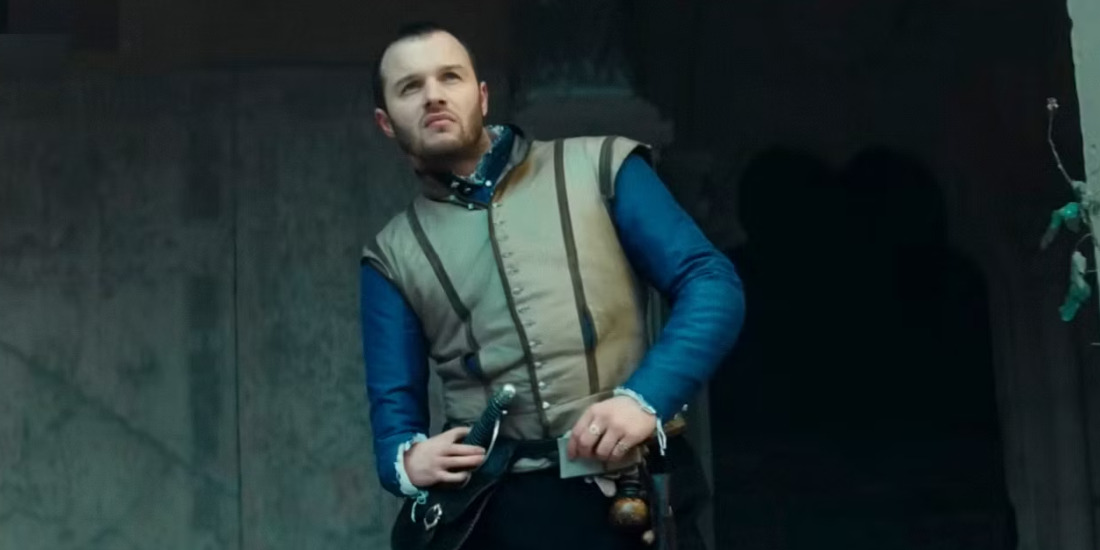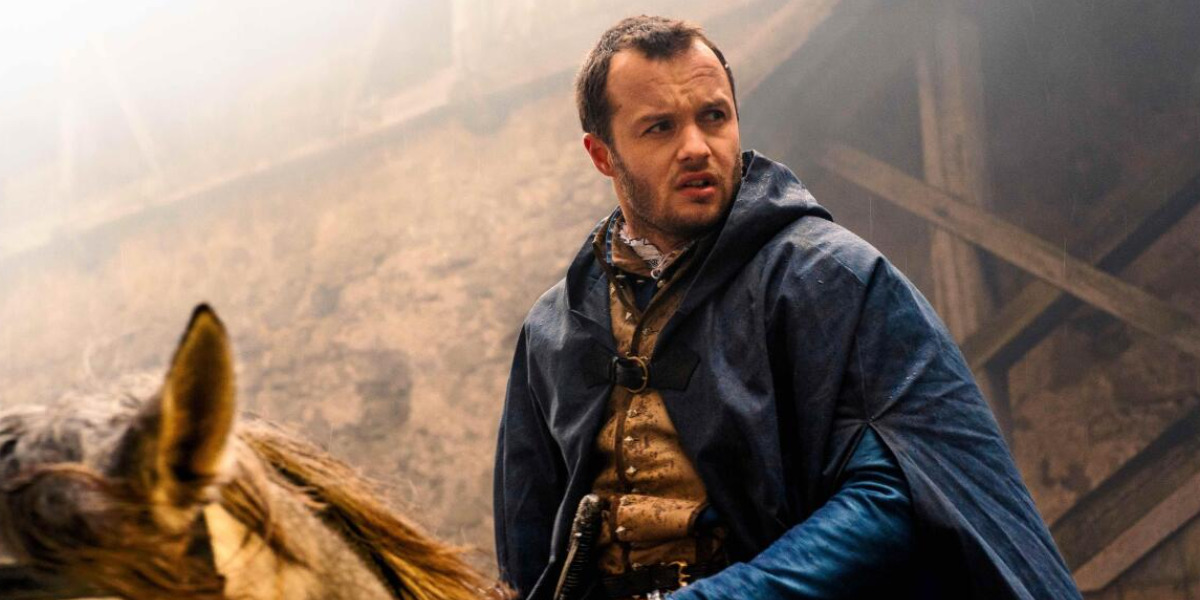‘Shardlake,’ the Hulu historical series set in the Tudor period during Henry VIII’s rule, offers a unique murder mystery narrative that finds the titular protagonist, Matthew Shardlake, in the middle of an intriguing investigation riddled with conspiracy. As the dissolution of monasteries come about in 16th century England, the lethal murder of Lord Cromwell’s commissioner, Robin Singleton, presents a hindrance to the surrender of Scarnsea’s remote monastery. As a result, the Lord sends his trusted lawyer, Matthew Shardlake, to investigate the Benedictine abbey alongside Cromwell’s haughty emissary, Jack Barak.
In the investigation that follows, more deaths, mystery, and lordly schemes follow, which sway the lawyer and his partner in different directions. Thus, the show remains a riveting take on a classic whodunnit premise, transporting the viewers to a time in England’s history that continues to be a source of fascinating interest. However, for the same reason, the series’ historical setting is bound to give way to curiosity about the story’s and its protagonist’s basis in real life.
Shardlake: The Tudor Era and C.J. Sansom’s Work
‘Shardlake’ is a book-to-TV adaptation of C.J. Sansom’s ‘Dissolution,’ the 2003 murder mystery novel that charts the adventures of its titular character, Matthew Shardlake, a Tudor-era lawyer. The first season of the show recreates the mystery of the first novel, which takes place in a monastery facing its end as a peculiar murder brings the king’s men to its doors. The unique setting allows the narrative to delve into the historical event of monastery dissolutions that occurred in the 1500s after Henry VIII became the Supreme Head of the Church through the passing of a Parliament act. Even so, despite the historical relevance of the setting, the story’s details— through character and plot— diverge from reality, penning an account of fictional events.

The particular time period has always fascinated Sansom. As per the author, the Tudor era presented a distinct historical time of frenzy as the previous medieval age was coming to an end, bringing about a new definition for the state. For the same reason, Sansom felt drawn to the period. “If I were to talk today with someone from the 16th century, they’d think I was mad and probably heretical,” The author told The Guardian in a 2010 interview. “That’s what’s so interesting about writing about the period: to comprehend it, you have to work your way into a totally different worldview.”
Consequently, Sansom’s interest in the Tudor era naturally paved the path for the idea of a murder mystery à la P. D. James and Ruth Rendell, unfolding in the context of a monastery on the edge of dissolution. Consequently, ‘Dissolution,’ the source material behind the series, retains its origins in Sansom’s fictionalization of events within a historical time period. As a result, the show— which remains significantly authentic to Sansom’s work— itself sustains fictitious origins.
Characters such as Lord Cromwell and Norfolk and allusions to Henry VIII’s crown and the mysteries surrounding it remain realistic historical references. Nevertheless, the central storyline of Matthew and Jack’s investigation at the Scarnsea monastery and the crimes unraveling within its walls are works of fiction adapted from Sansom’s writing.
Matthew Shardlake: A Fictional Lawyer and His Relevance to Reality
Unlike the few historical figures that become narrative-driving characters in the show, its protagonist, Matthew Shardlake, remains a fictional character with fictional roots. The character is defined by his profession as a lawyer, which allows him to helm the murder mystery storyline in the show. Author Sansom possessed numerous reasons for deciding on the character’s instrumental profession and spoke about it at length.

“I thought it made sense for Shardlake to be a lawyer for a number of reasons,” Sansom shared. “First, the law was my profession: I find legal practice endlessly interesting. Second, it existed then and now, so it provides a point of contact for readers. And third, it’s democratic: it offers a way into any number of mysteries and puts Shardlake in the way of an endless variety of characters.” On the other hand, Matthew’s existence as a character with a visible disability also informs a significant aspect of his storyline.
As a result, Matthew’s character presents a nuanced dichotomy between the history of oppression against people with disabilities and the modern understanding of it. Speaking about the same, the author noted how the 16th century provided the ideal historical landscape for such a character. “This [The 1500s] is the age of the humanists; we’re leaving medieval thought patterns behind. I’m not saying a man like Shardlake did exist then, but he could have, where even 20 years earlier, he couldn’t. That’s enough for me.”
The show remains compliant with the character’s sentiment by casting Arthur Hughes in the role, ensuring an authentic approach to representation. In a conversation with AP News, the actor shared his thoughts on the character. He said, “I think having those leading roles, especially in this Tudor world that Shardlake lives in, which is built in ableism every day, but which is backed up by God and by everything that everyone’s taught.”
“And also to show that that a disabled actor can play a leading part. And he’s written as a disabled man, and even some of the smallest things about growing up a bit different, looking different — Shardlake will feel all those things, and I’ve felt those things. Maybe I don’t have to kind of manufacture that so much.” Therefore, Matthew’s character— although bereft of a historical counterpart, remains an instrumental and intricate part of the story.
Read More: Best Historical Movies on Netflix


You must be logged in to post a comment.